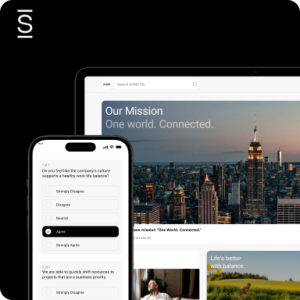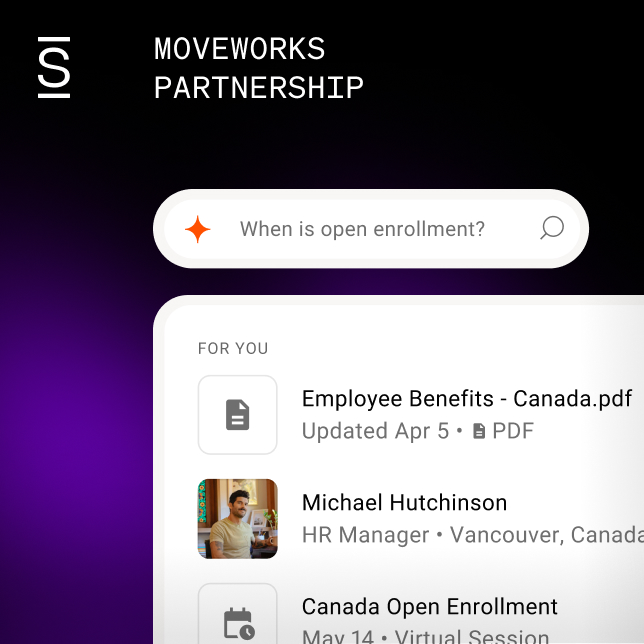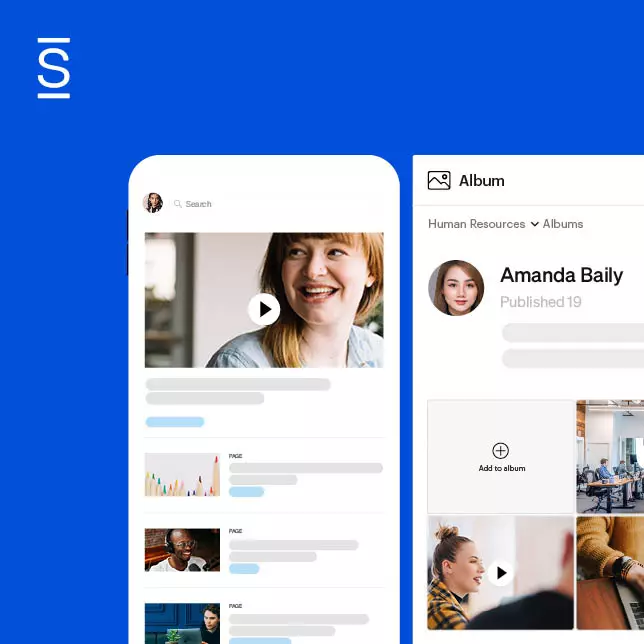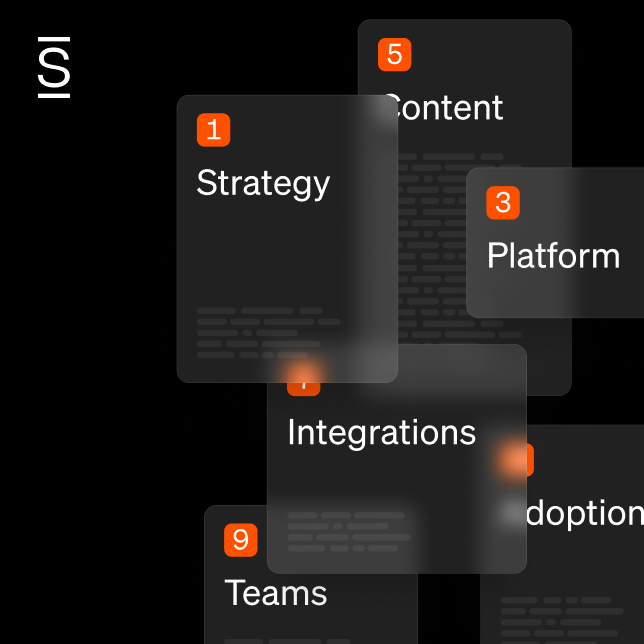Now that you’ve laid the foundation of your modern intranet, it’s time to knuckle down and actually create the social intranet. The length of time this takes may vary depending on what product you are using and what you are trying to achieve. Some intranet projects can take months to implement, while others are far more straightforward and can be completed in a matter of weeks.
Make sure you don’t rush your project or cut corners! Follow the steps detailed in this guide to create the best company intranet possible for your workforce.
Create a cross-functional core project team
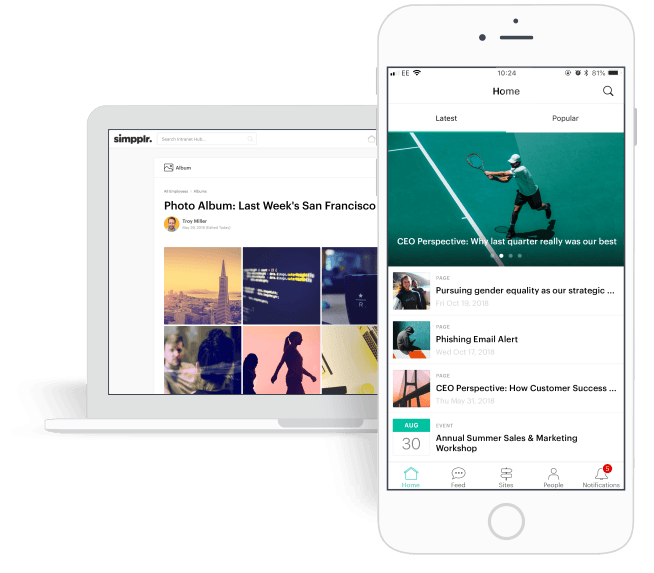
If you were able to get cross-functional support and consensus from senior leaders, it will be easier to now bring together a cross-functional project team to build and promote the new intranet.
Having a cross-functional team means you get varied perspectives on the project, access to a broader range of skills, and greater buy-in from multiple departments and functions. Having a good mix of diverse people also makes the project more enjoyable!
Beyond the core team, there will be a wider network of individuals involved in the project, including those contributing content or working on usage policies, marketing, communications, corporate gifting, and launch advocates.
Get to know your users inside-out
Intranets were created to be used by the workforce. However, if you don’t know much about your workforce and what they do in their working day then you’re not going to be able to design the best possible intranet for them.
It really pays to do some research into the sort of information your users need to support them in their roles. What sources and systems do they currently use? What are their pain points? What processes are in play? How do they communicate and collaborate?
Getting to know your employees inside-out will mean you can design an intranet based around their real needs, rather than what you think they
might want.
Get to know your users inside-out
There is an abundance of useful data you can gather and techniques you can use to get to know your workforce, including:
- using metrics to see which parts of your old intranet worked and which didn’t
- looking at the results of the last employee survey interviewing key stakeholders
- running focus groups for different parts of your organization
- organizing a general survey to gather information and obtain feedback
- undertaking observation of different key roles in the organization
- testing employees’ reactions to what you’ve built so far… and then testing their reaction once you’ve tweaked it
The easiest approach is also often the most effective: just have a chat with your employees. Instead of asking them about the intranet, ask them about their jobs, and how they do them. While your staff probably won’t know much about intranets (why would they?), they will be able to share a lot of insights into their working practices that will present you with ideas and opportunities.
Involving as many users as possible during the project phase not only gives you additional input into the design, but also helps to create advocacy and a sense of ownership from employees. Employees who feel that they made some kind of contribution to the intranet are far more likely to want to use it, and to tell their colleagues about it.
Identify areas of value
In the process of scoping a vision, speaking to senior stakeholders, and researching your employees, certain areas and features of obvious value to your new intranet should emerge.
The focus of this process should be to help employees in their everyday work as well as deliver organizational-level benefits. Typical areas or features of value might be:
- Business sites delivering relevant information to employees in that section of the organization
- Links to key applications used in the company
- Central place for your organization’s official policies and procedures
- Central place for all your brand and marketing collateral
- Place for sales teams to share leads and stories
- Social groups for staff who want their own space on the internet
- Location experts throughout your organization via the directory of employees
- CEO communications via news items or a blog
- Area for all HR-related information, including onboarding
- Places for project teams to interact
- Orientation area for new hires to get up to speed about the company
And of course, don’t forget a perennial favorite on virtually all intranets…the latest staff cafeteria menu!
Encourage early adopters
zIn addition to core areas of value, there will be some communities or functions within your organization that are eager to experiment with their own areas and are excited by the possibilities of the intranet. Make sure you encourage these early adopters! Their experiments can produce some of the most valuable areas, providing essential learnings into what works, as well as generating success stories that can be used to promote your new modern intranet.
Identify sites and communities (and assign owners)
If you have a good idea of what you want to do with your intranet and have some early adopters lined up, then you can start to identify some of the sites and communities that can make this happen.
A community or group is likely to need a place where they can swap updates, have discussions, share resources, ask questions, and collaborate on ideas. A site is likely to be based more on content. For example, having separate areas for news, documents, events, and other features; it might also include a space for discussions, depending on your intranet software.
You’ll want to get some of these sites and communities live and seeded with content and discussions ready for launch day. You’ll need to assign a business owner for each site or group and possibly an additional person who is going to manage that site on a day-to-day basis.
When preparing for launch day, it’s better to err on the side of caution and select more sites and communities to take forward than you think you’ll need. This is an excellent habit, as site owners and groups tend to work at their own pace. This means that, inevitably, some won’t be prepared for launch.
Try and get a good cross-section of sites and communities that have different users – for example, you could include some non-business groups.
Create a balanced homepage
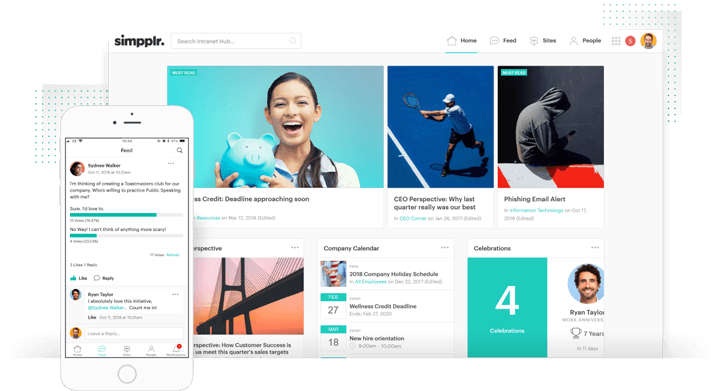
As part of the project, you’ll be building all the separate areas of your intranet, defining how the interface looks, and adding a logo.
But of all the areas of your intranet, the one that’s really worth getting right is the homepage. This is the place each of your employees will see every day when they log in, and it’s also likely the area on which your stakeholders will judge you. So spend some time on it!
There will usually be various options around choosing different widgets to include on your homepage and you’ll want to get a layout that works for your organization and that can fulfill the original vision for your intranet.
As a rule, make sure your homepage:
- Creates a good balance between different elements e.G. Corporate news, social activity, operational content, and “fun”
- Is not overloaded with content to the point that it becomes overwhelming
- Is aesthetically pleasing and uses relevant images
- Is tested for reaction with both users and stakeholders
Start to populate key areas

Populating key areas of your intranet can be one of the most time-consuming activities in creating the new platform, so it’s best to start as early as possible!
This process may involve migrating content from your old intranet or from documents sitting on a shared drive; it&rsquos also likely to mean creating new content from scratch.
Spend the time to ensure that only truly relevant and helpful content goes onto your new intranet. This will send a positive message on launch day that your intranet will be useful and valuable. If time is limited, it may be better to create a smaller number of areas with great content, rather than try to do a little bit of everything.
Work with owners and managers to populate communities and sites
In preparation for launch day, you’ll need to train owners and managers, define their responsibilities, let them know what is expected of them, and communicate best practices.
For example, those responsible for community areas should know the basics of community management, while site managers should know the importance of tagging content and discussions.
You’ll almost certainly want to create some resources to help everybody. Housing these in a dedicated support site on the intranet itself where site and community managers can also swap ideas, tips, and tricks is usually the way to go.
One thing that’s worth remembering is that sites and communities have to be owned and managed by those responsible. Let them work at their own pace and don’t put too much pressure on them, but at the same time don’t do all their leg work. Establishing this work pattern from the outset is important for sustainable success.
Populate employee profiles
People are the lifeblood of organizations, and are at the heart of your social intranet.
Spend time at the outset to ensure everyone has an individual employee profile. You will find this to be one of the most-used parts of the intranet, helping employees to find the right people and to get to know each other a little better.
Give everyone a head start by organizing the pre-population of employee profiles with the right contact and job information, and if possible, individual employee photos. This may feed directly from your existing Active Directory, or if you had an existing intranet with employee profiles. You may need to work with your IT and HR folk to see if you can migrate content over.
After the intranet launches you will be asking all employees to complete sections of their individual profile, like a brief biography.
Go mobile from day one
Employees will want to be able to access the intranet from their mobile device. Try and make this happen from day one, as going mobile helps to drive adoption and employee engagement with the new intranet.
Accessing the intranet from mobile devices gives employees the ability to access useful content on the go and allows them to work flexibly from any location. Employees also love the powerful user experience of working with a tablet.
Where there are a high number of frontline workers who are not in the office (for example in retail or factory units), mobile access is essential. Whatever you do, do not forget your non-wired employees.


